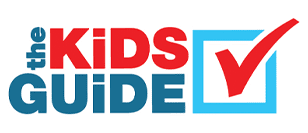As director of one of Eastern Washington State’s most successful homeschool programs, I am always on the quest to discover new ways for students to approach the task of research with enthusiasm, empowerment, and passion. Such a reward is the kind of personal treasure that can transform a life. This year, the treasure map to our ongoing quest appeared at the nexus of two very different opportunities.
The first was the prestigious National History Day program. With millions of entries worldwide, the NHD program consists of a series of local and regional events and strives to showcase history as a critical tool for understanding the present world.

Each year, over 3000 finalists and their families descend upon the University of Maryland, College Park Campus for the week-long finals, and far more than bragging rights are at stake. The competition is carefully designed to celebrate and enhance critical thinking, problem-solving skills, research, and reading, while building self-esteem and confidence.
We at HomeLink Yakima have entered this competition for four years, with different degrees of success. Four years ago, four middle school students entered a 10-minute play on Magellan’s trip around the world under the theme of “Barrier Breakers.” Our students took home first prize at the national level in the maritime division. The national theme for 2022-23 is “Frontiers in History, people, places and ideas.”
This brings me to the second part of our educational quest; to better empower and enhance our students’ personal toolset for research and critical thinking. This is when we discovered eSpired’s The Kids Guides, with their wealth of topics and thoughtful, highly approachable presentation of history.
With the guides as an initial guide, our HomeLink students eagerly dug in and used the Kids Guides as the starting point for this year’s NHD competition. The guides became so valuable at increasing student engagement that we’ve incorporated them into our HomeLink curriculum.
There are several stages of the NHD competition ahead and many levels to our educational quest here at HomeLink. In future articles, we will outline some of the steps we use as part of our powerful program. We hope you will find them valuable.
Our kids are counting on us for the empowerment and freedom to discover life on their own terms. They also know that the world is depending on them to use the enduring lessons of history to help make a lasting difference.
April Thome is the Founder and Director of the Yakima HomeLink program and Special Advisor to eSpired.
April earned a B.A. in history education from the University of Washington and completed her fifth year at Central Washington University. Additionally, she completed training as an educational therapist through the National Institute for Learning Disabilities located in Norfolk, Virginia, and special training in study skills through the National Institute for Secondary Principals in Boston, Massachusetts. April taught 5th grade for 5 years in the Selah public schools and worked for 11 years at West Side Christian School, serving 6 years in the classroom and 5 years as an elementary principal. In 1997 she founded the private program called “HomeLink Yakima,” which offers once-a-week classes for home-schooled students of all ages.
The HomeLink Yakima program covers all subjects, from math, science, literature, history, and the arts. The high school classes taken at HomeLink are fully accredited through the NARHS program www.narhs.org
For more information on HomeLink, Yakima, you can also check out www.facebook.com/homelinkyakima
Process Stages Agenda
At HomeLink Yakima, the beginning stages were introduced Wednesday, September 14 to a group of 30 middle school homeschooled students meeting for the first day of class. Initially, they discussed the concept of a “frontier”. They they were introduced to the KIDS GUIDES that will serve as thresh holds to ideas for research.
SCAVENGER HUNT STAGE: 1-2 months
Students will be checking out different KIDS GUIDES each week reading and searching for ideas that might lend themselves as portals for further study. At first students will simply keep a list of topics that have possibilities. The key to turning an idea into a possibility is whether there exists a trove of additional information that is obtainable through research. So students will be required to do some soft digging at first. The question that must be answered is “Can you find 1-2 other sources that provide information on this topic?” If so – it turns into a possibility.
As the list of possibilities grows, it’s important that students keep track of where they found those additional resources for each topic. Thus documentation skills will be taught. A bibliography will be created.
DETECTIVE STAGE: 2 weeks
In November, students will make some decisions about which topic in their list will be chosen as their history day focus.
- Which topic has an abundance of additional resources?
- Which can mold itself into a strong thematic statement with abundant possibilities?
- Which has two opposing sides?
- Which can be developed into a project – exhibit, performance, webpage, documentary, or research paper?
Now the detective work will be notched up as these questions are answered. Preliminary research begins on various topics. Within two weeks, THE topic and project will be arrived at. Students can now decide if they are working in groups of up to 5, or if they will be working alone.
MINING STAGE: 6 weeks
In December and January, students will be introduced to deeper digging. Here they will learn about primary sources and secondary sources to support their research. As each of their bibliographies grow, the two types of sources must be kept separate. A local library visit at this juncture is a must so that resources can be located. The librarian will be called on to instruct students in search the National Archives, Library of Congress, and various Museum exhibits for information. Field trips and interviews of experts in the chosen field are other option of gathering information.
PROJECT DEVELOPMENT: 4 weeks
At the end of January, the most valuable research nuggets will be compiled to form the script of the project. This stage requires detective work again. Which nuggets are the most valuable? How shall the concepts be ordered in their projects to prove the chosen thesis? Is there enough information to support both sides offered? Is the project attractive and convincing?
PRACTICE: 2-3 weeks
By late February, students will have their project completed. Now it is time for them to learn how to present their projects to a viewing audience and judge. The performance teams need to practice, practice, practice. Timing of the project is imperative. Documentaries and performances have a 10-minute limit before the judge. Every detail must be considered.
LOCAL EXPO DAY
A week before the first competition occurs, students will have a chance to display they projects before an audience of family and friends. This will give them an opportunity to practice their timing and words of explanation. And this will give the audience a chance to extend ideas and supporting words of encouragement to the history day competitors.
Research Readiness
As they await to hear what they will research this year, I see them with their pickaxes ready, lights on their helmets ready to dig. Little do these young prospectors realize the treasures they are about to discover. The theme, “Frontiers in History – people, places, ideas” provides a portal for the miners. Now they need topics that fit the theme; how can their minds be expanded to discover unique topics that motivate them to prod deeply? The answer is waiting in the corner where stands a book rack of Kids Guides sporting a vast array of fascinating content that will trigger ideas. My task is to simply introduce the students to the engaging magazines. They’ll unearth their nuggets to mine in no time.

Recent Comments